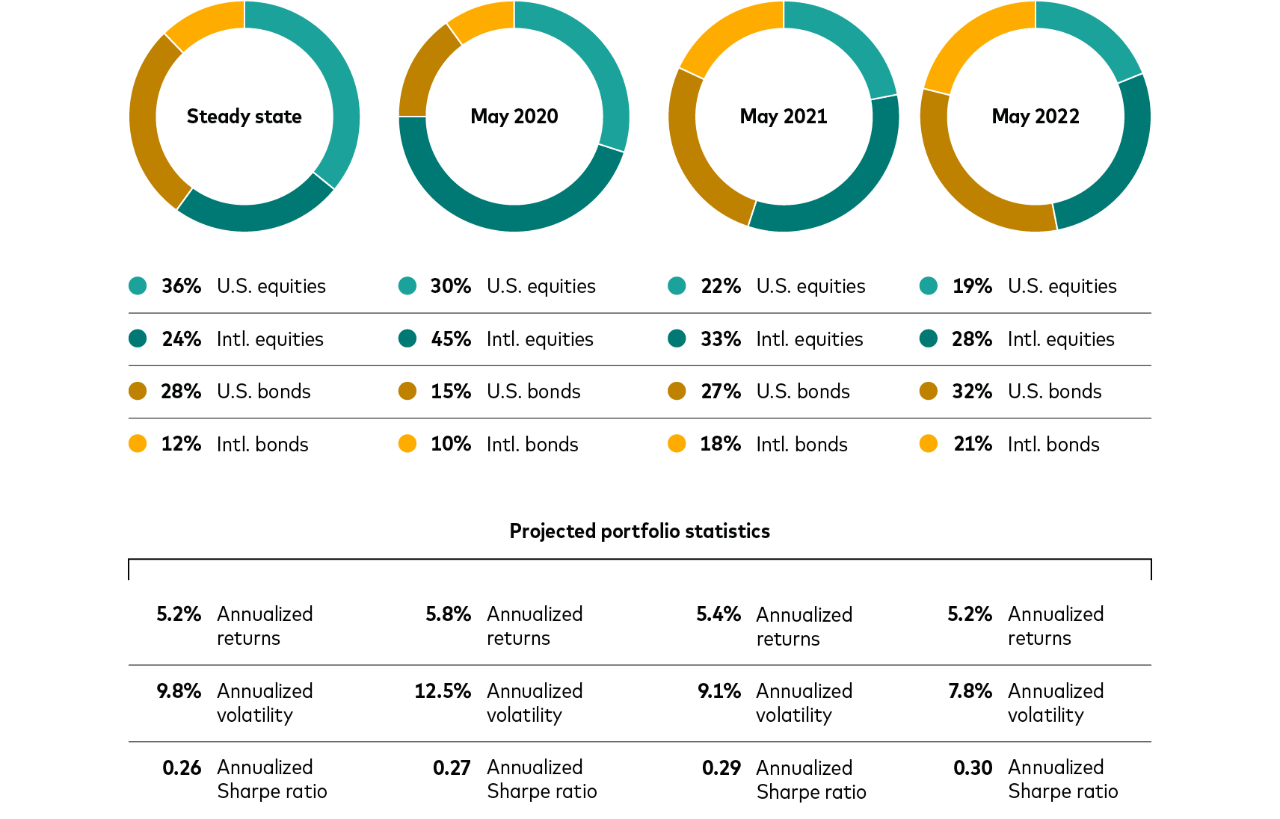Expert insight
Three economists on U.S. growth, inflation, and labor
December 12, 2023
The U.S. economy may be set for a turn as monetary policy becomes more restrictive, which could soften the labor market and send inflation down toward the Federal Reserve’s 2% target. In this Q&A, three Vanguard U.S. senior economists—Josh Hirt, Asawari Sathe, and Adam Schickling—share their views on policy, inflation, the labor market, and the U.S. economy in 2024.

Asawari Sathe
Vanguard U.S. Senior Economist

Adam Shickling
Vanguard U.S. Senior Economist
Higher interest rates haven’t done enough to slow the economy and bring inflation down faster. Why not?
Hirt: Economic offsets to monetary policy have played an important role as the U.S. economy has been resilient in 2023. The continued lagged effects of pandemic-era fiscal support to households, businesses, and governments, as well as more recent fiscal spending for industrial policy, have counteracted the accumulated effects of more than 5 percentage points of monetary policy tightening. In our view, interest rates have not been restrictive enough for long enough to overcome these effects.
The real, or after-inflation, rate of interest has only recently turned positive and by historical standards hasn’t yet approached levels consistent with conditions to induce the economic softening required to bring inflation down as quickly as policymakers would like.
How do you see this changing in 2024?
Hirt: As 2024 progresses, especially toward the end of the year, we expect real interest rates to move higher—driven largely by a continuation of the disinflation trend—and approach ranges of restrictiveness more consistent with past periods of economic downturn. As a result, we expect the effects of monetary policy to take firmer hold in the year ahead, producing the economic weakness required to bring inflation sustainably down to 2%. We do believe this may substantially limit the odds of avoiding a recession in 2024.

What will drive inflation continually lower in 2024?
Sathe: Inflation in the U.S. has drifted lower driven by falling shelter and goods prices. The decline in goods prices, which had soared so high soon after the COVID-19 pandemic began, has been steady and is largely responsible for the progress we’ve seen in lowering inflation thus far.
Shelter inflation, which constitutes around 30% of the Consumer Price Index, has slowed for much of 2023. Leading indicators such as home prices, rent, vacancy rates, and mortgage rates lead us to believe that shelter prices will continue to fall before stabilizing toward the middle of 2024.
Risks to the inflation picture certainly remain. Geopolitical tensions and adverse weather are potential upside risks in the near term, while a recession deeper than we anticipate would likely lower inflation quickly, albeit at the cost of growth. The last mile to 2% inflation will depend most crucially on the labor market and the trajectory of wage growth, which has slowed recently.
What do you foresee for the labor market in 2024?
Schickling: The labor market was a notable contributor to U.S. economic resilience throughout 2023 as robust real wage growth propelled consumer spending. However, trends have begun to emerge that suggest a modest cooling in labor demand and potential vulnerabilities to shocks in certain regions or sectors. Shocks that may have been easily mitigated amid the historically tight labor market of 2022 now have greater potential to cause a material increase, perhaps of a percentage point, to the unemployment rate.
Over the last six months, health care and government have accounted for almost two-thirds of all nonfarm employment growth while representing only about a quarter of the overall labor market. This outsized contribution from just two sectors reveals a labor market with more pockets of softness than headline employment growth would suggest.
Although the labor market is usually a lagging indicator, meaning it follows rather than leads the business cycle, there are a few indicators that we believe augur a turning point. These include part-time employment for economic reasons, discouraged jobseekers, temporary help services employment, private-sector job growth, and those unemployed for 15 weeks or longer as a percentage of the unemployed. Another important factor is a more robust recovery in the labor force that brings more job seekers just as job opportunities are growing more slowly. Based on recent movements in these indicators, our model predicts a roughly 60% probability that the unemployment rate will increase throughout 2024, from 3.7% in November 2023 to 4.8% in December 2024.
Notes: All investing is subject to risk, including the possible loss of the money you invest.
A closer look

Our outlook for 2024
A return to sound money, with interest rates above inflation, is a real positive.

Americas
U.S. resilience may finally give way to the effects of restrictive monetary policy.

Asia-Pacific
China likely to stimulate its economy while Australia’s policy remains tight.

U.S. dollar
A new, proprietary Vanguard index suggests the dollar is overvalued and will depreciate modestly in the coming years.


